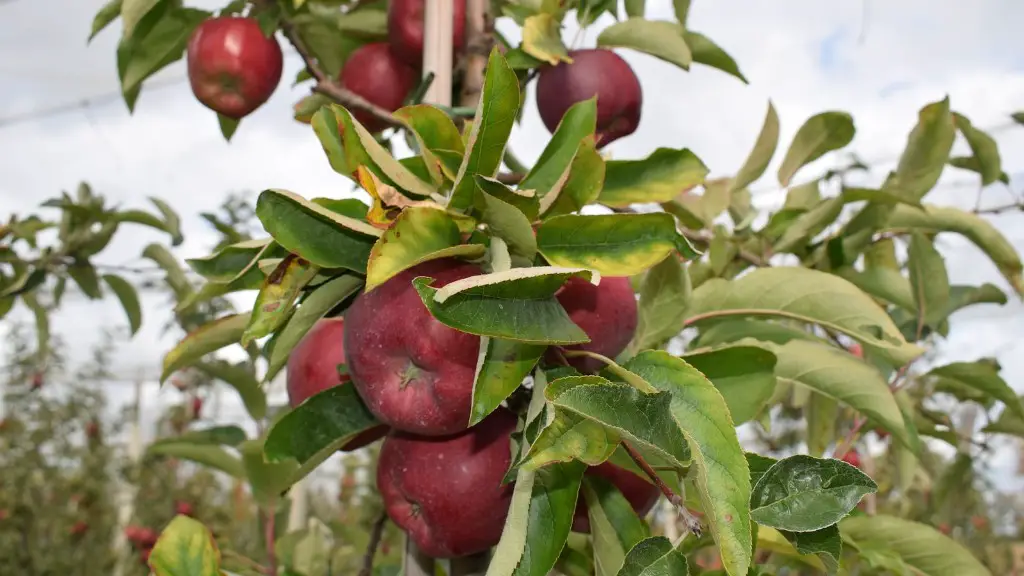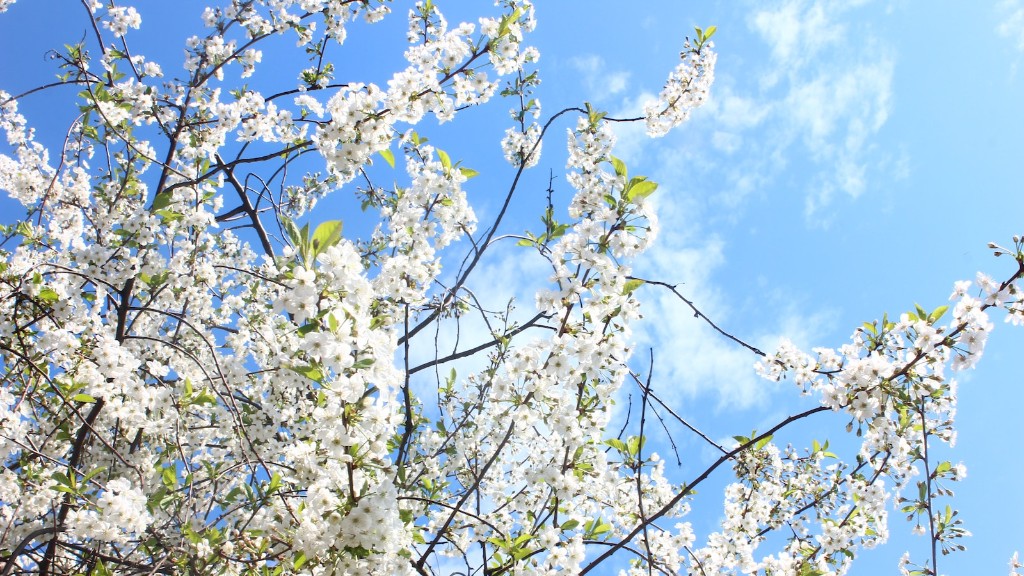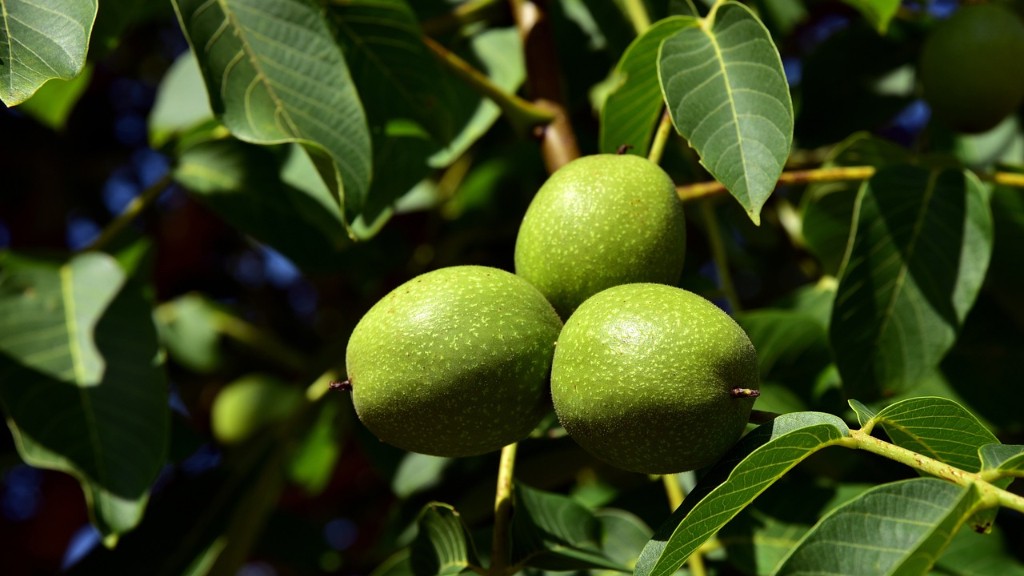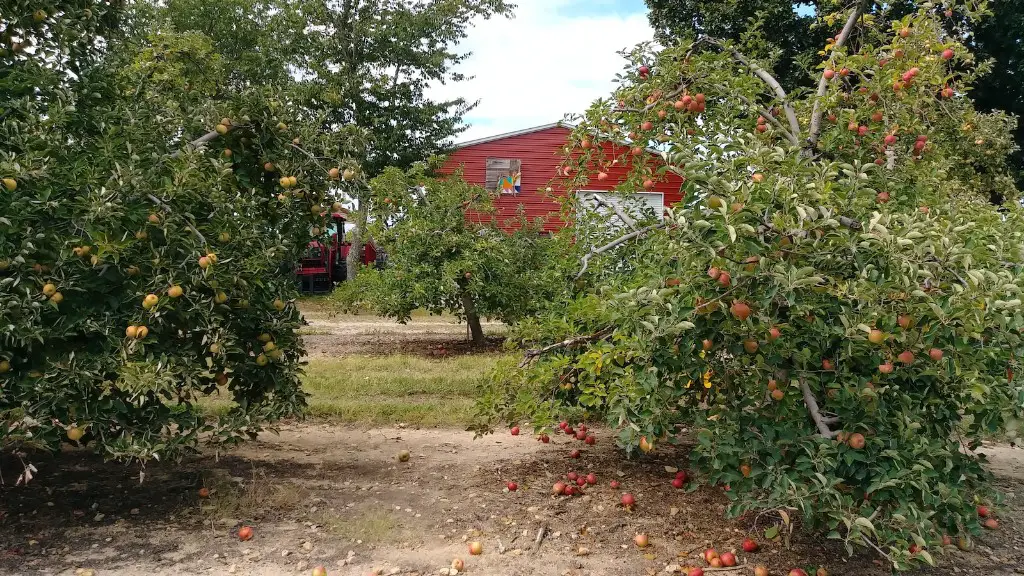Pruning is an important part of keeping an apple tree healthy and vigorous. To ensure that a tree produces the best fruits in terms of both quality and quantity, it’s crucial to give it frequent pruning. Fortunately, pruning apple trees is much easier than it sounds! Here’s how to get it done effectively and efficiently.
First, you’ll want to identify the location of any vertical scaffolds. Scaffolds are main branches that determine the general shape of your tree. It’s important to identify these early so you can maintain their structure when you prune.
Next, you’ll want to remove any branches that are tightly crossing each other or that rub against each other. Removing these branches helps to promote air circulation through the tree and reduces the chances of disease.
You’ll also need to remove any dead, diseased, or decaying wood from the tree. Make sure to cut at least 6 inches below the area of the tree that’s affected to make sure all the diseased wood is removed.
The next step is to remove any broken, weak, or vertical branches. Vertical branches tend to produce weak fruit with little quality and should be removed.
You’ll also want to remove any water sprouts, which are small and spindly branches that look different than the other branches in the tree. Cut them as close to the branch they’re sprouting from as possible.
Finally, you’ll need to thin out the branches of your apple tree. This is done to reduce competition for resources between the branches – don’t be afraid to thin out the branches a bit to let light and air into the tree.
Crowning and Shaping
The final step in pruning an apple tree is to crown and shape it. This involves selecting the one branch from each scaffold that will become the main leader of the tree. Prune the other branches heading in that direction and trim off any lateral branches to maintain its shape.
You’ll also want to reduce the amount of foliage on the tree. This is done by cutting back the ends of the shoots that have grown during the previous season. This improves air circulation, which keeps diseases to a minimum. It also helps to reduce over-fertilization, allowing the energy to be better spent on producing fruit.
When shaping the apple tree, you’ll also want to reduce the number of apples that are produced as this helps tremendously with growth overall. To do this, go through the graft union, where smaller branches join the tree, and remove any additional buds that have developed.
Finally, you’ll want to prune any excess water sprouts or suckers from the graft union. These are small branches that may have grown from the union and can stunt the growth of the tree and prevent it from producing quality fruit.
Other Pruning Decisions
When considering pruning an apple tree, it is important to consider the size of the tree, the climate in which it is growing, and the species of apple that you are growing. Smaller trees may require less pruning than larger trees, as they’ll naturally require fewer resources.
The climate you are growing in also affect your pruning decisions. If you live in a humid climate, you may want to prune more often to allow more air circulation and reduce the risk of disease. If you live in a dry climate, you may want to focus more on keeping your tree healthy with more frequent pruning.
Finally, the species of apple you’re growing may influence your pruning decisions. There are over 7,500 varieties of apples, each with different pruning needs. It’s important to consider this when developing your pruning strategy.
By keeping all these factors in mind when pruning, you’ll be able to ensure that your apple tree is healthy and can produce the best quality fruit possible.
Essential Tools and Materials
Before you start pruning, it’s important to make sure you have the right tools and materials. Pruning shears are the most important tool you’ll need, as they allow you to make accurate cuts without cutting too deep or too quickly. You’ll also want to make sure you have a sharpening stone to keep the edges of your shears sharp.
In addition to pruning shears, it’s also important to have a ladder. This will help you reach high branches safely and make sure you’re able to access all areas of the tree. If you’re working with a mature tree, you may also want to invest in a pruning saw, to make sure you can get rid of any thicker branches.
You’ll also want to make sure you have some clean cloths or rags around for cleaning up cuts and spills. This will help to keep your apple tree healthy, and make sure it doesn’t become susceptible to disease.
Finally, you may want to invest in a pair of pruning gloves to help protect your hands as you prune. Pruning gloves come in a variety of materials and thicknesses, allowing you to find the protection that’s right for you.
Best Practice Techniques
Now that you have the tools and materials you need, it’s time to focus on pruning technique. You’ll want to make sure to always work in the direction of the leggiest part of the tree, which helps to create a neat, uniform look.
You’ll also want to take extra caution when using pruning shears, to make sure you don’t damage the tree. You should also focus on a natural shape when pruning, rather than forcing the tree into an unnatural shape or forgoing pruning altogether.
Another important step in pruning is to cut the correct side, or angle, of the branch to prevent disease from entering the tree. This means you’ll want to make sure you’re always cutting at a 45-degree angle, with the angle below the cut. This will keep the cut clean and allow for quicker healing.
Finally, you’ll want to make sure you’re not pruning too late in the season. Most pruning occurs during the winter, when the tree is dormant and there is less risk of disease. Pruning at the wrong time may stunt the tree’s growth and can leave it prone to disease.
When and How Often to Prune
Now that you’ve learned the basics of pruning an apple tree, you’re probably wondering when and how often you should be pruning. As a general rule, you should aim to prune your apple tree at least once a year and anytime during the winter when it is dormant.
Pruning should be done more often if the tree has been subjected to wind or other extreme weather events. In general, however, you should aim to prune little and often: that way, you’ll help the tree stay healthy and look its best.
As you prune, it’s also important to remember that all pruning should be done with an eye towards promoting future growth and health. You’ll want to be careful not to prune too aggressively and to make sure you’re not damaging the tree.
It’s also important to note that pruning should not be done at the same time as fertilizing or applying pesticides, as this can cause damage to the tree. Pruning should always be done first, and the tree should be fertilized and sprayed afterwards.
Conclusion
Pruning an apple tree is a crucial part of keeping it healthy and producing quality fruit. By following the steps outlined above, you can ensure that your apple tree is well-maintained and that it can reach its full potential. Just remember to use the correct tools, adhere to best practice techniques, and never prune too harshly or too often.





